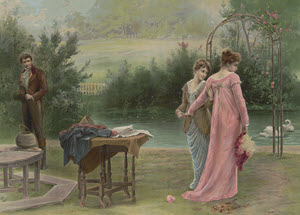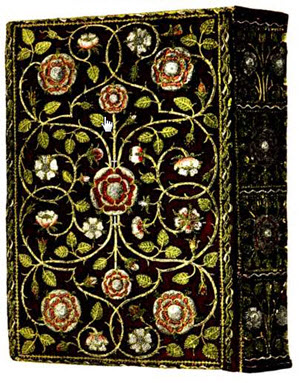NOTES TO THE NARRATIVE OF A. GORDON PYM
by Edgar Allan PoeNotes
{*1} Whaling vessels are usually fitted with iron oil-tanks- why the
Grampus was not I have never been able to ascertain.
{*2} The case of the brig Polly, of Boston, is one so much in
point, and her fate, in many respects, so remarkably similar to our
own, that I cannot forbear alluding to it here. This vessel, of one
hundred and thirty tons burden, sailed from Boston, with a cargo of
lumber and provisions, for Santa Croix, on the twelfth of December,
1811, under the command of Captain Casneau. There were eight souls on
board besides the captain- the mate, four seamen, and the cook,
together with a Mr. Hunt, and a negro girl belonging to him. On the
fifteenth, having cleared the shoal of Georges, she sprung a leak in
a gale of wind from the southeast, and was finally capsized; but, the
masts going by the board, she afterward righted. They remained in
this situation, without fire, and with very little provision, for the
period of one hundred and ninety-one days (from December the
fifteenth to June the twentieth), when Captain Casneau and Samuel
Badger, the only survivors, were taken off the wreck by the Fame, of
Hull, Captain Featherstone, bound home from Rio Janeiro. When picked
up, they were in latitude 28 degrees N., longitude 13 degrees W.,
having drifted above two thousand miles! On the ninth of July the
Fame fell in with the brig Dromero, Captain Perkins, who landed the
two sufferers in Kennebeck. The narrative from which we gather these
details ends in the following words:
"It is natural to inquire how they could float such a vast
distance, upon the most frequented part of the Atlantic, and not be
discovered all this time. They were passed by more than a dozen sail,
one of which came so nigh them that they could distinctly see the
people on deck and on the rigging looking at them; but, to the
inexpressible disappointment of the starving and freezing men, they
stifled the dictates of compassion, hoisted sail, and cruelly
abandoned them to their fate."
{*3} Among the vessels which at various times have professed to meet
with the Auroras may be mentioned the ship San Miguel, in 1769; the
ship Aurora, in 1774; the brig Pearl, in 1779; and the ship Dolores,
in 1790. They all agree in giving the mean latitude fifty-three
degrees south.
{*4} The terms morning and evening, which I have made use of to avoid
confusion in my narrative, as far as possible, must not, of course,
be taken in their ordinary sense. For a long time past we had had no
night at all, the daylight being continual. The dates throughout are
according to nautical time, and the bearing must be understood as per
compass. I would also remark, in this place, that I cannot, in the
first portion of what is here written, pretend to strict accuracy in
respect to dates, or latitudes and longitudes, having kept no regular
journal until after the period of which this first portion treats. In
many instances I have relied altogether upon memory.
{*5} This day was rendered remarkable by our observing in the south
several huge wreaths of the grayish vapour I have spoken of.
{*6} The marl was also black; indeed, we noticed no light colored
substances of any kind upon the island.
{*7}For obvious reasons I cannot pretend to strict accuracy in these
dates. They are given principally with a view to perspicity of
naarrative, and as set down in my pencil memorandum..
2021
Complete Works of Edgar Allan Poe Online: Poems of Edgar Allan Poe | Works of Edgar Allan Poe - volume 1 | Works of Edgar Allan Poe - volume 2 | Works of Edgar Allan Poe - volume 3 | Works of Edgar Allan Poe - volume 4 | Works of Edgar Allan Poe - volume 5 |




